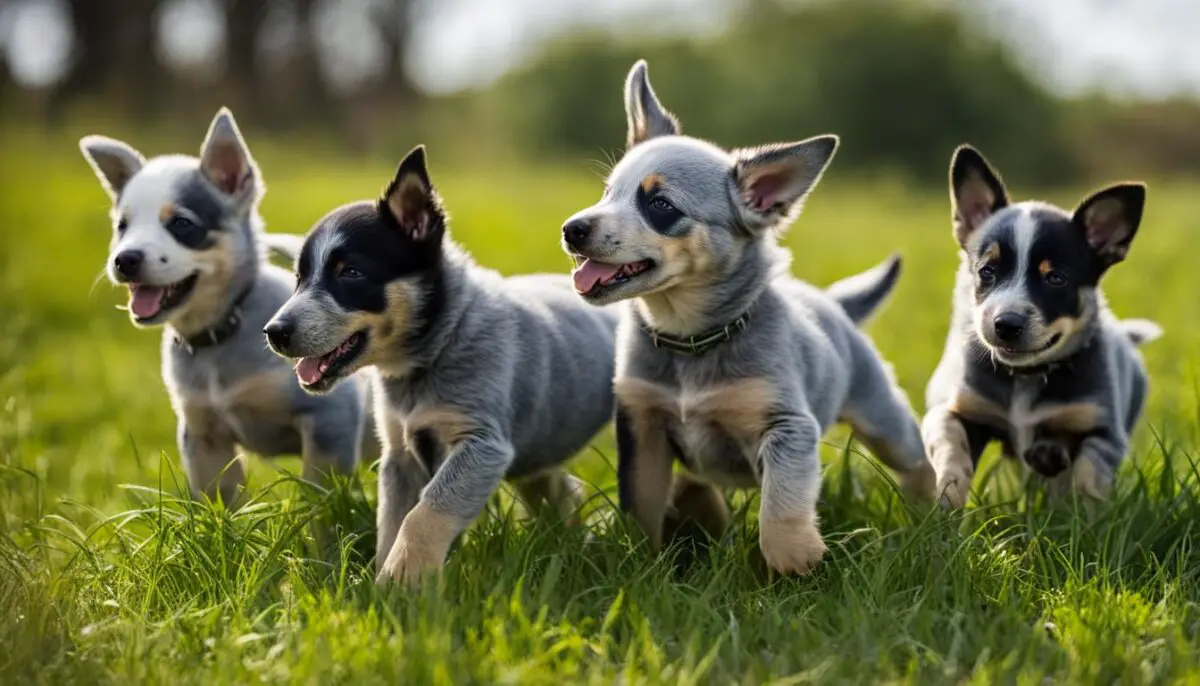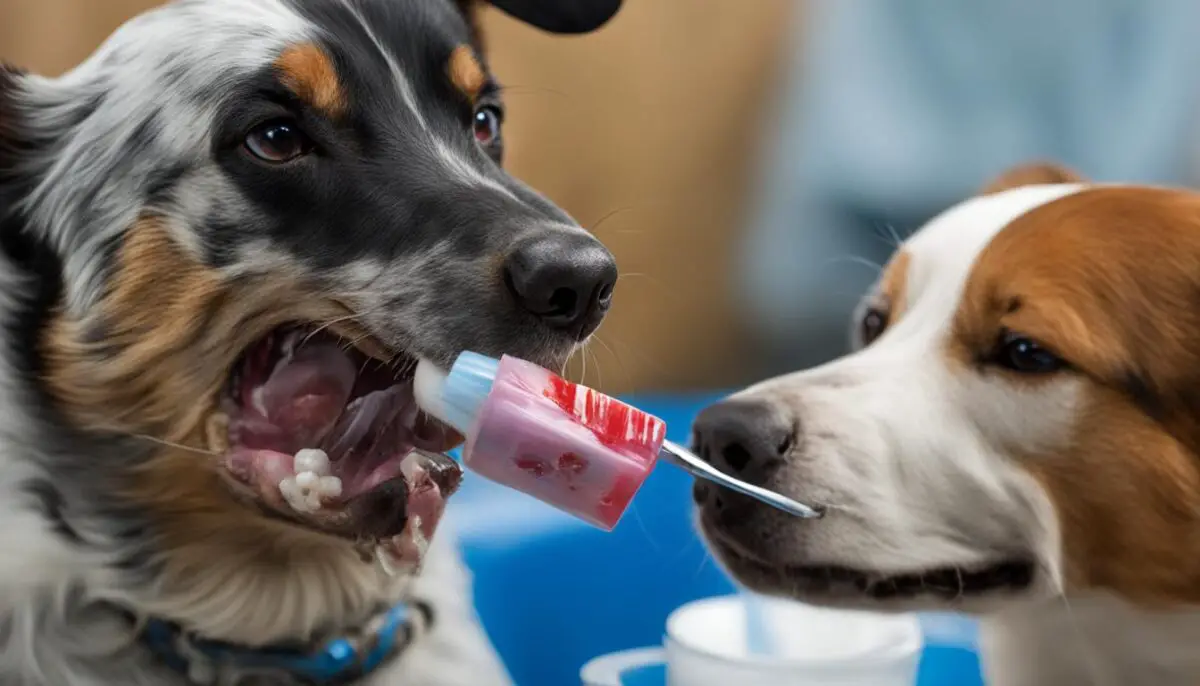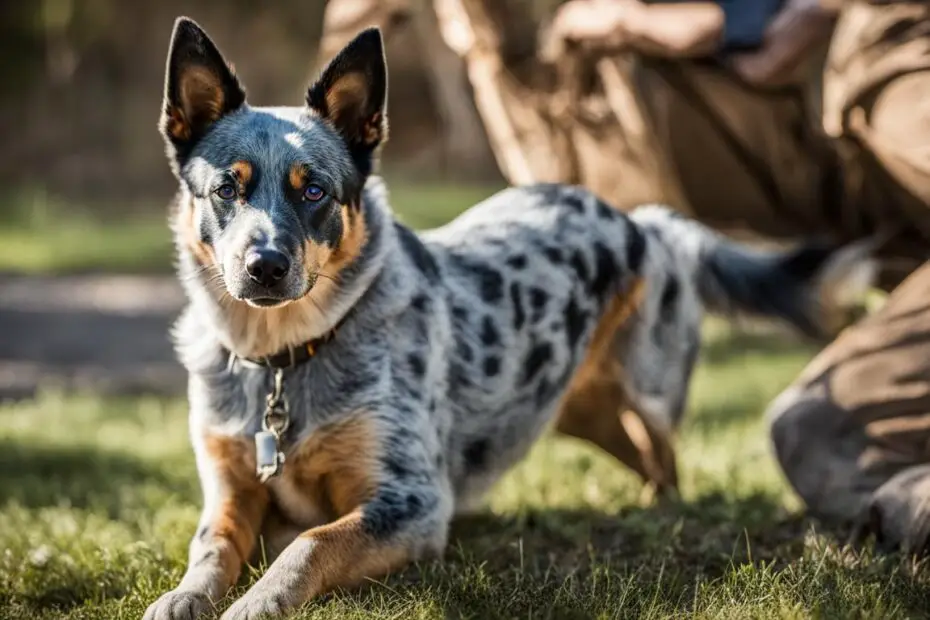The blue heeler, also known as the Australian cattle dog, is a sturdy, medium-sized herding dog with a distinctive coat color and a natural tail. They are known for their loyalty, intelligence, and strong work ethic. The breed originated in Australia and was developed to work on farms as herders. Blue heelers have a dense double coat that is weather-resistant, and their coat color can be blue or red in mottled or speckled patterns. They have a lifespan of 12 to 16 years and belong to the herding group.
Blue heelers are highly active dogs and require regular exercise and mental stimulation to prevent boredom and destructive behaviors. They are generally loyal and affectionate with their families but can be cautious around strangers. Early socialization and training are important to ensure they behave well with other dogs and pets. Blue heelers are not hypoallergenic and require regular grooming to maintain their coat. Common health issues in the breed include hip dysplasia, progressive retinal atrophy, and deafness. Proper nutrition, exercise, and regular vet check-ups are essential for their overall well-being.
Key Takeaways:
- Blue heelers are sturdy, medium-sized herding dogs with a natural tail.
- They have a dense double coat in blue or red, with mottled or speckled patterns.
- Blue heelers are highly active and require regular exercise and mental stimulation.
- Early socialization and training are important for their behavior with other dogs and pets.
- Regular grooming, nutrition, and vet check-ups are crucial for their overall well-being.
Physical Characteristics of Blue Heelers
Blue heelers, also known as the Australian cattle dogs, have distinct physical attributes that make them stand out. These medium-sized dogs have a sturdy build and an alert, ready-to-work stance. Let’s take a closer look at the characteristics that define blue heelers.
Coat Color and Patterns:
Blue heelers have a coat color that can be either blue or red. Their coat patterns can be mottled or speckled, adding to their unique appearance. When blue heeler puppies are born, they actually have white fur, which gradually changes to their blue or red coat color as they grow.
Tail Length and Natural Placement:
A noteworthy feature of blue heelers is their long tail, which naturally hangs down. Unlike some other breeds that may have their tails docked, blue heelers maintain their full tail length. This natural tail gives them a characteristic presence.
Muscular Build and Head Shape:
Blue heelers have muscular legs, strong necks, and somewhat rounded heads with pointy ears. Their muscular build allows them to excel in their herding duties and other physically demanding activities.
Eye Color:
One of the striking features of blue heelers is their eye color, which is typically a vibrant blue shade. This unique eye color adds to their overall appearance and charm.
Size and Weight:
The average height of a blue heeler is between 17 to 20 inches, measured at the shoulder. They typically weigh between 35 to 50 pounds, depending on their individual build and genetics.
High Energy Levels:
Blue heelers are known for their high energy levels and need plenty of exercise to stay happy and healthy. Their physical characteristics support their active lifestyle and make them agile and capable working dogs.

With their unique coat colors, natural tail length, and muscular build, blue heelers are visually captivating dogs. Their physical characteristics not only make them distinctive but also contribute to their ability to excel in their herding work and other activities.
Blue Heeler Temperament and Behavior
Blue heelers are known for their loyalty, intelligence, and high energy levels. These highly active dogs thrive when they have a job to do. In fact, they are often referred to as “shadow dogs” due to their intense devotion to their owners and their dislike of being separated from them. While blue heelers can be cautious around strangers, they are generally affectionate with their families.
Proper socialization is key to helping blue heelers get along well with other household dogs and dog-friendly cats. Despite their natural herding instincts, they can learn to behave appropriately around other pets with early training. Without proper training and mental stimulation, blue heelers may exhibit behaviors such as nipping at running kids or playing too rough with other animals.
Blue heelers excel in various canine sports and activities such as agility, flyball, herding competitions, and obedience trials. These activities not only channel their energy but also provide them with mental stimulation and a sense of purpose.
Blue Heeler Temperament
A blue heeler’s temperament is shaped by various factors, including genetics, socialization, and training. While each individual may have slight variations, there are some common traits that are often seen in blue heelers:
- Loyalty: Blue heelers are known for their unwavering loyalty towards their families.
- Intelligence: These dogs are highly intelligent and quick learners.
- Protectiveness: Blue heelers have a natural instinct to protect their loved ones.
- Alertness: They are always alert and ready to react to any potential threats.
- Work Ethic: Blue heelers have a strong work ethic and thrive when given tasks to complete.
With proper socialization, training, and mental stimulation, blue heelers can be wonderful companions and thrive in various living situations.
Blue Heeler with Other Dogs and Cats
Blue heelers can live harmoniously with other dogs and even cats, given the proper introductions and training. Early socialization is essential to help them develop positive associations and manners towards other pets.
When introducing a blue heeler to a new dog or cat, it’s important to do so in a controlled environment, allowing them to get to know each other gradually. Supervision is crucial during the initial interactions to ensure safety and prevent any potential conflicts.
Here are some tips for introducing a blue heeler to other dogs and cats:
- Start with a neutral territory: Choose a neutral location for the first meeting to avoid territorial behaviors.
- Use positive reinforcement: Reward good behavior and provide plenty of praise during the introductions.
- Gradual introductions: Allow the dogs or cats to interact in short, supervised sessions, gradually increasing the duration as they become more familiar with each other.
- Offer individual attention: Make sure to give each pet individual attention and their own space to prevent competition for resources.
With patience, consistency, and proper training, blue heelers can coexist peacefully with other dogs and cats, creating a harmonious household environment.

Blue Heeler Lifespan and Care in Senior Years
Blue heelers, also known as Australian cattle dogs, have an average lifespan of 12 to 16 years. As these loyal and intelligent dogs age, their care needs may change, requiring special attention to ensure their continued well-being.
Regular vet check-ups and screenings are crucial for monitoring the health of senior blue heelers. These appointments can catch any potential issues early and allow for timely intervention.
One common issue that senior blue heelers may experience is mobility issues, such as arthritis and joint problems. Providing appropriate care and support for their joints is essential. This can include adjusting their exercise routine to be less strenuous and incorporating low-impact activities like swimming or short walks. Additionally, switching to a senior-specific dog food can help maintain their muscle tone and support joint health.
Mental stimulation and enrichment activities are important for preventing cognitive decline in senior blue heelers. Keeping their minds active and engaged can help maintain their cognitive function and overall well-being. Puzzle toys, interactive games, and training sessions can all contribute to mental stimulation.
Creating a safe and comfortable environment is also important for senior blue heelers. Providing orthopedic dog beds and other comfort items can help alleviate joint pain and improve their quality of life. Ensuring a secure and accessible living space can also prevent accidents and injuries.
Senior blue heelers still require regular grooming and dental care. Brushing their coat, trimming their nails, and cleaning their ears are all important aspects of maintaining their hygiene and overall health.
By providing the proper care and support, you can ensure that your senior blue heeler enjoys their golden years to the fullest.
| Care Tips for Senior Blue Heelers |
|---|
| 1. Schedule regular vet check-ups and screenings |
| 2. Adjust their exercise routine to be less strenuous |
| 3. Provide a senior-specific dog food for joint health |
| 4. Engage them in mental stimulation and enrichment activities |
| 5. Create a safe and comfortable environment with orthopedic dog beds |
| 6. Regular grooming and dental care |
Conclusion
Blue heelers, with their unique traits and energetic nature, require specialized care to ensure their well-being. These loyal, intelligent, and hardworking dogs make ideal companions for active individuals and families. To keep blue heelers happy and healthy, it is important to provide them with proper nutrition, regular exercise, socialization, and training.
One of the distinguishing features of blue heelers is their distinct coat color and natural tail. Their physical characteristics, including a sturdy build and strong herding instincts, make them stand out among other breeds. Blue heelers excel in various dog sports and activities, showcasing their athleticism and work ethic.
To maintain the overall well-being of blue heelers, regular grooming, dental care, and veterinary check-ups are essential. As they age, adjustments to their care routine may be necessary to address specific needs, such as mobility issues or cognitive decline. It is crucial to prioritize their comfort and happiness in their senior years.
Above all, the bond between a blue heeler and their owner is a truly special one. These remarkable dogs leave a legacy of loyalty and devotion. By following the care tips and being mindful of their unique traits, blue heelers can lead fulfilling lives as cherished members of the family.
FAQ
Are blue heelers born with tails?
Yes, blue heelers are born with naturally long tails that hang down.
What are the physical characteristics of blue heelers?
Blue heelers have a sturdy build, medium size, and distinct coat color. They have a natural tail, muscular legs, rounded heads, and pointy ears. Their eyes are typically blue.
How does the blue heeler temperament differ with other animals?
Blue heelers are known for their loyalty to their families and can be cautious around strangers. With proper socialization, they can get along well with other dogs and dog-friendly cats.
How should I groom my blue heeler?
Blue heelers require regular brushing and grooming to maintain their dense double coat. They also need regular dental care, nail trimming, and ear cleaning.
How much exercise does a blue heeler need?
Blue heelers have high energy levels and require at least 30 minutes of exercise daily, along with mental stimulation.
What is the average lifespan of a blue heeler?
Blue heelers have a lifespan of 12 to 16 years.
How should I care for my senior blue heeler?
Senior blue heelers may experience mobility issues and need adjustments to their exercise routine. Providing a comfortable environment, routine vet check-ups, and mental stimulation are important.
What makes blue heelers special as companions?
Blue heelers are loyal, intelligent, and hardworking dogs. They excel in various activities and create a strong bond with their owners.

